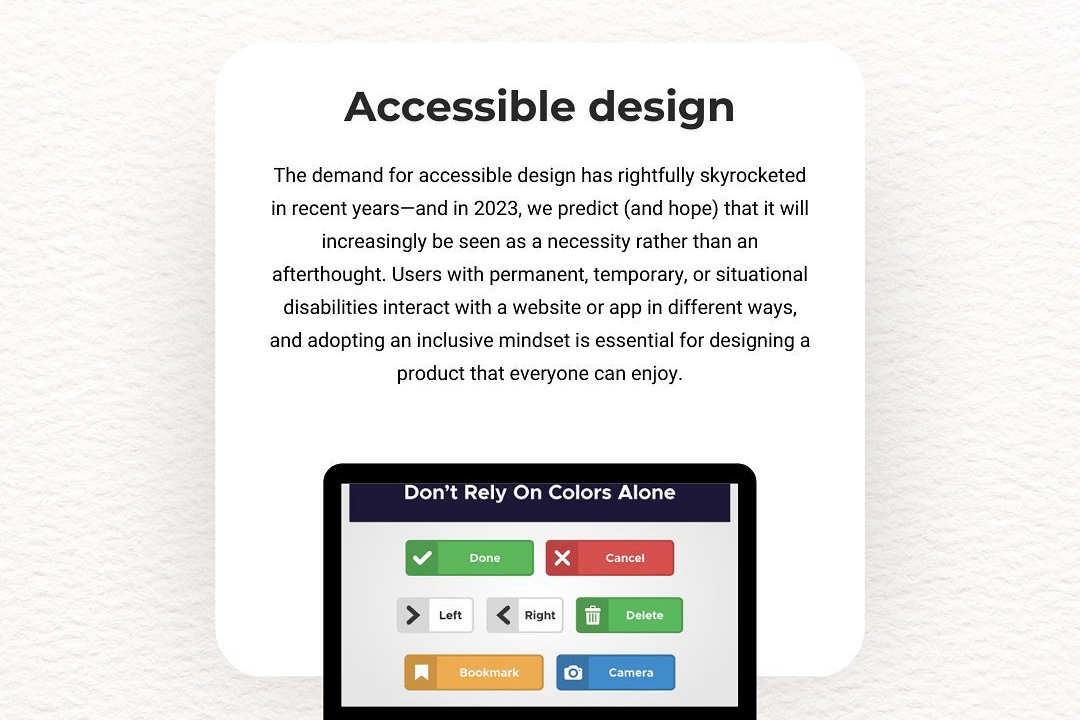Fatal Error in PHP for Program Run
A PHP fatal error is a serious type of error that occurs when the PHP engine encounters a problem th
Fatal Error in PHP for Program Run
A PHP fatal error signifies a critical problem that halts the execution of a script, emphasizing the importance of identifying and resolving such issues promptly to ensure the stability and functionality of a website or application. Understanding fatal errors helps developers debug effectively, prevent downtime, and deliver reliable user experiences by addressing syntax mistakes, undefined functions, or resource exhaustion that cause these errors.
To Download Our Brochure: https://www.justacademy.co/download-brochure-for-free
Message us for more information: +91 9987184296
A PHP fatal error signifies a critical problem that halts the execution of a script, emphasizing the importance of identifying and resolving such issues promptly to ensure the stability and functionality of a website or application. Understanding fatal errors helps developers debug effectively, prevent downtime, and deliver reliable user experiences by addressing syntax mistakes, undefined functions, or resource exhaustion that cause these errors.
Course Overview
The ‘Fatal Error in PHP for Program Run’ course provides a comprehensive overview of diagnosing, debugging, and resolving critical PHP fatal errors that disrupt program execution. It covers common causes, error handling techniques, and best practices to ensure smooth script performance, helping developers enhance their troubleshooting skills and build more robust PHP applications efficiently.
Course Description
This course teaches how to identify, troubleshoot, and fix fatal PHP errors that halt program execution, covering common causes, debugging methods, and best practices for stable and efficient PHP development.
Key Features
1 - Comprehensive Tool Coverage: Provides hands-on training with a range of industry-standard testing tools, including Selenium, JIRA, LoadRunner, and TestRail.
2) Practical Exercises: Features real-world exercises and case studies to apply tools in various testing scenarios.
3) Interactive Learning: Includes interactive sessions with industry experts for personalized feedback and guidance.
4) Detailed Tutorials: Offers extensive tutorials and documentation on tool functionalities and best practices.
5) Advanced Techniques: Covers both fundamental and advanced techniques for using testing tools effectively.
6) Data Visualization: Integrates tools for visualizing test metrics and results, enhancing data interpretation and decision-making.
7) Tool Integration: Teaches how to integrate testing tools into the software development lifecycle for streamlined workflows.
8) Project-Based Learning: Focuses on project-based learning to build practical skills and create a portfolio of completed tasks.
9) Career Support: Provides resources and support for applying learned skills to real-world job scenarios, including resume building and interview preparation.
10) Up-to-Date Content: Ensures that course materials reflect the latest industry standards and tool updates.
Benefits of taking our course
Functional Tools
1 - Xdebug: Xdebug is a powerful debugging extension for PHP that provides detailed stack traces and error logs, enabling students to pinpoint the exact location of fatal errors in their code. It offers features like breakpoints, variable inspection, and step through debugging, which are essential for understanding complex error scenarios. By integrating Xdebug into their workflow, students can efficiently trace errors in real time, greatly reducing the time spent on troubleshooting and enhancing their debugging skills. Its detailed reports help in analyzing the root causes of errors, offering a comprehensive understanding of error propagation and helping prevent future issues.
2) PHP Error Log Files: PHP error log files serve as repositories of error messages generated during script execution. Students learn how to configure PHP to log errors to specific files, enabling them to review detailed messages about syntax errors, fatal errors, and warnings. Analyzing these logs allows students to track recurring issues, understand the error context, and identify misconfigurations or problematic code segments. Proper management of error logs is crucial for maintaining the stability of PHP applications, especially after deployment in live environments where direct debugging might be limited.
3) PHPStorm Debugger: PHPStorm, a popular IDE, comes with an integrated debugger that facilitates seamless error detection and troubleshooting. Its graphical interface allows students to set breakpoints, step through code execution, and monitor variable states in real time. By using the PHPStorm debugger, learners can quickly identify issues leading to fatal errors, understand code flow, and test potential fixes without impacting the live environment. The tool also offers a visual representation of call stacks and exception handling, simplifying the diagnosis process for learners at all levels.
4) Browser Developer Tools: Browser based developer tools such as Chrome DevTools are essential for diagnosing front end issues that may relate to or cause backend fatal errors. Students are taught to monitor network requests, view console logs, and analyze script execution flow. These tools help identify errors originating from server responses or JavaScript conflicts that might trigger server side failures. Proper understanding of these integrated tools enables students to correlate server errors with front end behaviors, leading to holistic troubleshooting and faster resolution of issues impacting user experience.
5) Command Line Debugging Tools: Utilities like PHP CLI (Command Line Interface) enable students to run scripts directly from the terminal, providing immediate feedback on errors without the need for a web server. They learn to execute PHP scripts in various environments, observe error outputs, and use command line options for verbose logging. Command line debugging simplifies the process of reproducing and diagnosing error conditions, especially in scripts where web server configurations or HTTP contexts are not involved. Mastery of CLI tools empowers students to perform quick tests, isolate issues, and fine tune scripts efficiently.
6) Error Reporting Configuration in PHP: Proper configuration of PHP’s error reporting settings is vital for effective troubleshooting. Students are instructed on modifying the PHP.ini file or using runtime functions like error_reporting() to control the level of error visibility during development and production. These settings include enabling display_errors temporarily for debugging or configuring log_errors to capture issues systematically. Adjusting error reporting levels helps in highlighting critical errors, such as fatal errors, ensuring that students do not overlook vital information during the troubleshooting process.
7) Remote Debugging Platforms: Cloud based debugging solutions like Zend Debugger or cloud IDE integrations offer remote debugging capabilities, especially useful for distributed teams or complex deployment environments. These platforms connect with local or remote PHP instances, allowing students to monitor and troubleshoot errors over the network. Remote debugging enhances flexibility for troubleshooting live server issues, collaborating with team members, and accessing error data from different locations. This approach is increasingly important as applications scale and move towards cloud infrastructures.
8) Automated Testing Tools: Incorporation of automated testing frameworks like PHPUnit helps in proactively detecting errors before deployment. By writing unit and integration tests, students learn to identify code paths that could lead to fatal errors under specific conditions. Continuous testing helps catch issues early, reducing the likelihood of runtime failures in production environments. Automated testing also facilitates regression testing, ensuring that new changes do not reintroduce previously fixed errors, thereby maintaining application stability.
9) Profiling and Performance Monitoring Tools: Tools such as New Relic, Blackfire, or Tideways provide real time insights into code performance and error occurrences. These tools help identify bottlenecks or resource leaks that may lead to fatal errors like memory exhaustion or timeout issues. Students learn to analyze performance metrics, correlate errors with specific code paths, and optimize their scripts accordingly. Monitoring tools thus play a crucial role in maintaining high availability and stability of PHP applications by preventing errors caused by resource constraints.
10) Knowledge of Server and Hosting Environment Tools: Understanding server side tools like cPanel, SSH, or Plesk is vital for diagnosing fatal errors related to server configuration. Students are trained to check PHP version compatibility, memory limits, execution times, and error permissions within hosting environments. Managing server logs and configurations effectively ensures that backend issues contributing to fatal errors are identified and rectified swiftly. Mastery of these tools ensures a comprehensive approach to troubleshooting that includes server level diagnostics alongside code analysis.
11 - Error Bootstrapping and Exception Handling: Students learn the importance of implementing robust error handling mechanisms using try catch blocks and custom exception classes. Properly managing exceptions prevents abrupt script termination and allows for graceful degradation or detailed error reporting, making it easier to identify the cause of fatal errors. This approach also aids in maintaining application stability and providing meaningful feedback to users and developers during troubleshooting.
12) Custom Logging and Error Tracking Solutions: Beyond built in PHP error logs, students are introduced to advanced logging libraries like Monolog or Log4PHP. These tools enable creating customized log entries with different severity levels, timestamps, and contextual data. Implementing comprehensive logging systems helps in tracing complex errors and understanding the sequence of events leading to fatal issues, especially in production environments.
13) Code Quality and Static Analysis Tools: Tools such as PHPStan and Psalm are valuable for statically analyzing code to detect potential errors before runtime. Students learn to identify type mismatches, deprecated functions, and possible fatal error points early in the development process. Incorporating static analysis reduces the likelihood of runtime failures, improving overall code robustness.
14) Version Control and Debugging Branches: Utilizing version control systems like Git, students are taught to manage bug fix branches and track changes related to error resolution. This practice facilitates collaborative debugging, rollback to stable versions, and systematic management of code changes that resolve fatal errors, enhancing overall maintenance efficiency.
15) Error Simulation and Testing Scenarios: Students are trained to create controlled environments to simulate error conditions, such as exceeding memory limits or triggering specific exception pathways. This proactive approach helps in understanding how fatal errors occur, testing recovery mechanisms, and improving application resilience.
16) Secure Error Handling and User Feedback: Emphasizing safe error display practices ensures that sensitive information isn't exposed during error reporting. Students learn to display generic error messages to users while logging detailed error data securely, balancing troubleshooting needs with security considerations.
17) Monitoring and Alerting Systems: Implementation of real time monitoring tools like Nagios, Zabbix, or Datadog allows students to set up alerts for critical errors or resource exhaustion events. This proactive monitoring ensures that fatal errors are promptly detected and addressed before causing significant downtime or data loss.
18) Understanding Framework and CMS Error Handling: For students working with popular PHP frameworks (like Laravel or Symfony) or Content Management Systems, lessons include framework specific debugging tools and error handling mechanisms. These tools provide structured ways to track down errors within complex systems and facilitate quicker troubleshooting.
19) Database and External Service Debugging: Since external services and database interactions might lead to fatal errors (such as connection timeouts or corrupt data), students acquire skills to troubleshoot these dependencies effectively. Using tools like data profiling, query analyzers, and connection diagnostics helps resolve related errors.
20) Learning from Error and Crash Reports: Students are introduced to reading and analyzing error and crash reports generated by crash analytics platforms or server logs. These insights reveal patterns, recurring issues, and potential vulnerabilities, guiding targeted improvements and preventing future fatal errors.
21 - Implementing Fail Safe and Redundancy Mechanisms: Teaching students to design applications with fallback strategies, retries, and redundancy reduces the impact of fatal errors. Techniques such as circuit breakers, queueing, and fallback methods help maintain service availability even during critical failures.
22) Performance Profiling During Error Occurrence: Using profiling tools like XHProf or Blackfire during error states helps students understand resource usage patterns leading to fatal errors. This insight assists in optimizing code and resource management to prevent errors like memory leaks or timeout failures.
23) Documentation and Knowledge Base Creation: Encouraging students to document common error scenarios, troubleshooting steps, and resolution strategies builds a valuable knowledge base. This resource accelerates troubleshooting for future issues and streamlines collaborative debugging efforts.
24) Cloud Based Debugging and Logging Solutions: Integration with cloud platforms like AWS CloudWatch, Azure Monitor, or Google Operations Suite enables students to manage logs and errors from distributed PHP applications. These tools facilitate centralized monitoring, detailed analytics, and rapid error diagnosis across multiple environments.
25) Security Considerations During Debugging: Students learn best practices for debugging without exposing vulnerabilities, such as disabling error displays in production, securing log files, and ensuring debugging tools do not create attack surfaces, thereby maintaining application security during troubleshooting.
26) Root Cause Analysis (RCA) Techniques: Training students to perform RCA involves deep dives into error events to identify underlying causes, whether code flaws, configuration errors, or infrastructure issues. This comprehensive understanding leads to more effective, long term resolutions of fatal errors.
27) Error Prevention Strategies: Beyond fixing existing errors, students are educated on preventative measures such as code reviews, pair programming, adherence to coding standards, and automated build pipelines, all aimed at minimizing the introduction of fatal errors during development.
28) Operator and User Feedback Integration: Gathering detailed feedback from end users and system operators about error symptoms enables a more accurate diagnosis. Incorporating this feedback into debugging workflows enhances error resolution accuracy and reduces downtime.
29) Understanding Application and Server Metrics: Analyzing server metrics like CPU load, memory usage, and disk I/O during error events enables students to correlate system health with application errors, fostering holistic troubleshooting skills that encompass infrastructure level issues.
30) Legal and Compliance Considerations: Recognizing the importance of handling error data responsibly, especially in regulated industries, helps students ensure that debugging procedures comply with data protection laws and privacy standards, avoiding legal repercussions while troubleshooting.
Browse our course links : https://www.justacademy.co/all-courses
To Join our FREE DEMO Session:
This information is sourced from JustAcademy
Contact Info:
Roshan Chaturvedi
Message us on Whatsapp: +91 9987184296
Email id: info@justacademy.co












